Suspect circuit:
The circuit is probably as per Andy Aka but from the photo, it does not have the R1 high voltage series R, the zener, the fuse and possibly not the C2 output cap (which MAY be with the battery).
This is a "universal" light as the 400V rated cap may just about survive on 230 VAC, but the battery will be boiled twice as fast when using 230 VAC.
The missing R1 was intended to provide some voltage dropping but, more importantly, to provide some surge protection. If there are exposed power plug pins when mains is disconnected, touching them both will give you direct body access to the 20 mili-Joule which could be stored in the capacitor. Not enough to use as a defibrillator but certainly enough to ensure that you never voluntarily touch them ever again when charged [ask me how I know :-) ]. Unlikely to kill with single cap shock. Could. Muscle spasm or involuntary arm motion from shock may cause your arm to encounter nearby objects at speed and with force.
The diodes appear to be 1N4007, so they have done something right :-).
The missing fuse is meant to help in the event that the cap is not as AC mains rated as you'd hoped and fails short or some approximation thereof. The IN4007 diodes will probably make OKish standins.
The 330 Ohm resistor is probably used to power the power-on LED.
The battery is (apparently) used as the voltage clamp.
If it's a 6V battery then
$$I_{LED} \approx\approx = \frac{V_{bat}-V_{LED}}{R_{LED}}
= \frac{6.5-2}{330} =\approx 14 mA$$
which is OK.
The capacitor is (labelled as being) 1.5 uF (155 = 15000000 = 1,500,000 NF)
This is "large".
Current from 110V mains is around 100 mA.
$$ I_{LED} \approx= \frac{110 \times 1.414}{2\pi \times 2fC}
\approx= 100 mA \;\text{E&OE}$$
About double that at 230 VAC.
2f used as capacitor charges in half mains cycle and then flips back the other way on next half cycle.
Suspect battery charger:
Battery capacity unknown but from photo I'd doubt it was above about 500 mAh.
If battery is 500 mAh it will charge at around C/5 and if left charging overnight will be happily boiled well before morning UNLESS there is a regulator stage upper off.
If battery is 6V it is not unknown to connect strings of two white LEDs in series across the battery with no series resistors. This makes life exceeding exciting for the LEDs but works better than they have any right for it to.

Suspect capacitor:
The capacitor is (labelled as being) 400V DC rated.
CL21 means metallised polyester.
It MAY be manufacturer rated as a Y2 or X1Y@ capacitor, which it should be in this application, but in fact its pot luck even if it does claim to be rated properly in this type of equipment. A look on "Alibaba" shows many visually similar caps (which must not be confused with "electrically similar" and SOME of these are claimed to be X1Y2 rated, but the majority are not. See a few references at end for interest.
Lessons:
Some interesting lessons can be learnt from such devices.
It lights the LEDs, charges the batteries and goes out the door at a good low price.
It will probably not kill anyone.
What's not to like?
:-(
Alibaba - MPE 1.5 uF, 400V or similar:
http://www.alibaba.com/product-detail/CBB-film-capacitor-1-5uF-400V_1344932478.html
No X rating or mention of AC
No X rating or mention of AC
No X rating or mention of AC
No X rating or mention of AC - spec sheet.
No X rating - mentions AC without qualification in the fine print
A "real" example
And MANY more.
WARNING: ALL parts of this circuit and equipment powered by it should be considered to be at AC Mains potential at all times when connected to AC Mains. In this case the on/off switch and any metal parts are electrocution hazards.



